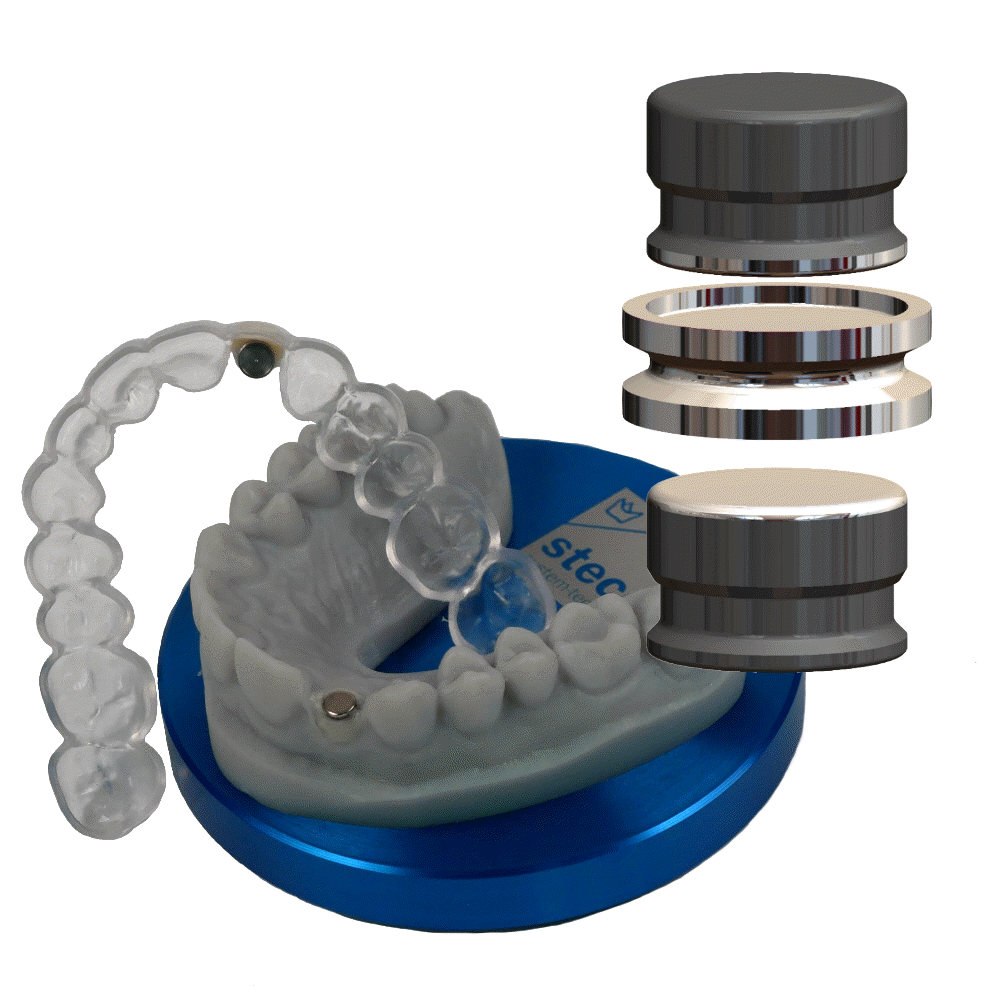Advertisement

Titanmagnetics® extrusion magnets
The magnets are encapsulated in gas-tight and corrosion-resistant titanium. The surface is blasted for a good bond to the fixing composite and polished on the exposed surfaces.
The magnetic positioning aids position the two extrusion magnets exactly parallel and also protect the polished surfaces.
Other extrusion processes with springs, hooks or tapes are usually difficult to clean. Steco's extrusion magnets have smooth surfaces so that they can be easily rinsed into a temporary restoration or splint.
Operating principle
A magnet is attached to the root. A second magnet is attached a short distance away in a splint or temporary restoration. The attractive force between the two magnets slowly pulls the root out of the socket until the two magnets meet. In the process, bone is built up underneath the root. The soft tissue is also displaced coronally. The maximum force between the two magnets is approx. 1 N (100 g).
Depending on the size and stability of the tooth or root fragment and the set force (distance), the process can take several weeks to months. Depending on the desired extrusion distance, the counter magnet can be repositioned to continue extrusion.
The magnets are encapsulated in gas-tight and corrosion-resistant titanium. The surface is blasted for a good bond to the fixing composite and polished on the exposed surfaces.
The magnetic positioning aids position the two extrusion magnets exactly parallel and also protect the polished surfaces.
Other extrusion processes with springs, hooks or tapes are usually difficult to clean. Steco's extrusion magnets have smooth surfaces so that they can be easily rinsed into a temporary restoration or splint.
Operating principle
A magnet is attached to the root. A second magnet is attached a short distance away in a splint or temporary restoration. The attractive force between the two magnets slowly pulls the root out of the socket until the two magnets meet. In the process, bone is built up underneath the root. The soft tissue is also displaced coronally. The maximum force between the two magnets is approx. 1 N (100 g).
Depending on the size and stability of the tooth or root fragment and the set force (distance), the process can take several weeks to months. Depending on the desired extrusion distance, the counter magnet can be repositioned to continue extrusion.

Hall 1.2 | A049

